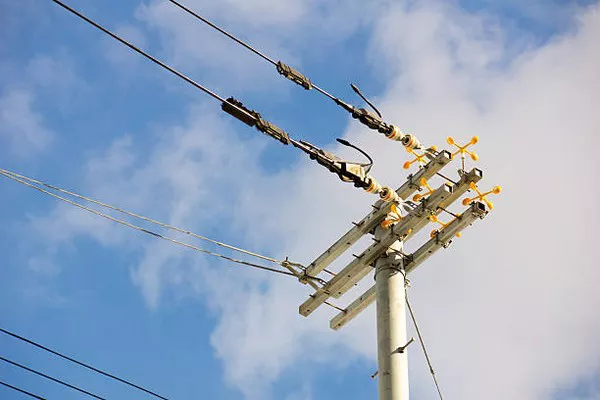In the realm of electrical engineering, transformers play a crucial role in the efficient transmission and distribution of electrical power. Among the various types of transformers, step-up transformers are particularly significant due to their ability to increase voltage while decreasing current. This article provides an in-depth analysis of how a step-up transformer operates and its impact on current, exploring its principles, applications, and benefits.
What is a Step-Up Transformer?
A step-up transformer is an electrical device designed to increase the voltage from its primary winding to its secondary winding. The fundamental principle behind its operation is based on Faraday’s Law of Electromagnetic Induction, which states that a changing magnetic field within a coil of wire induces a voltage across the coil.
The step-up transformer consists of two separate windings—the primary winding and the secondary winding—wrapped around a core. The primary winding is connected to the input power source, while the secondary winding delivers the transformed power to the load. The core is typically made of laminated sheets of silicon steel, which helps in reducing energy losses due to eddy currents and hysteresis.
How Does a Step-Up Transformer Affect Current?
To understand how a step-up transformer affects current, it is essential to consider the relationship between voltage, current, and power in an electrical circuit. The primary function of a step-up transformer is to increase voltage, but this process is intrinsically linked to a decrease in current. The relationship between the primary and secondary windings is governed by the following principles:
Voltage Ratio and Turns Ratio: The voltage increase in a step-up transformer is proportional to the turns ratio of the secondary winding to the primary winding. If the secondary winding has more turns than the primary winding, the voltage is increased. The voltage ratio Vs/Vp is equal to the turns ratio Ns/Np, where Vs is the secondary voltage, Vp is the primary voltage,Ns is the number of turns in the secondary winding, and Np is the number of turns in the primary winding.
Current Relationship: According to the principle of conservation of energy, the power input to the transformer must equal the power output, assuming an ideal transformer with no losses. The power in an electrical circuit is given by the product of voltage and current. Therefore, the increase in voltage is accompanied by a proportional decrease in current. The current relationship is inversely proportional to the turns ratio:
Is/Ip=Ns /Np
where is the primary current and is the secondary current. Hence, as the voltage is stepped up, the current decreases proportionally.
Power Conservation: In an ideal transformer, the power input to the primary winding is equal to the power output from the secondary winding. This relationship can be expressed as:
Vp⋅Ip=Vs⋅Is
Rearranging this equation, we get:
Is=Vp⋅Ip/Vs
Applications of Step-Up Transformers
Step-up transformers are utilized in various applications where high voltage is required, and their ability to reduce current plays a crucial role in enhancing efficiency and safety. Some notable applications include:
Power Transmission: One of the primary applications of step-up transformers is in power transmission networks. Electrical power is generated at relatively low voltages and then stepped up to higher voltages for long-distance transmission. Higher voltages are used to minimize energy losses due to the resistance of transmission lines. Since power losses are proportional to the square of the current, reducing the current by stepping up the voltage helps in reducing transmission losses and improving efficiency.
Electrical Substations: In electrical substations, step-up transformers are used to boost the voltage from the generation level to the distribution level. This ensures that power can be efficiently transmitted over long distances before being stepped down to lower voltages suitable for local distribution.
Industrial Applications: In industrial settings, step-up transformers are used to provide the high voltages required for specific processes and equipment. For example, in electroplating, high voltage is necessary to drive the electrochemical reactions. Step-up transformers are also employed in arc welding and other high-voltage industrial applications.
Renewable Energy Systems: Step-up transformers are integral to renewable energy systems such as wind turbines and solar power plants. These systems generate power at lower voltages, which is then stepped up to higher voltages for integration into the grid. This process ensures that the power generated is transmitted efficiently and meets the voltage requirements of the grid.
Advantages of Step-Up Transformers
Reduced Transmission Losses: By stepping up the voltage and reducing the current, step-up transformers help minimize energy losses in transmission lines. This is particularly important for long-distance power transmission, where losses due to resistance can be significant.
Enhanced Efficiency: Stepping up the voltage allows for more efficient use of electrical power. Lower current reduces the heat generated in conductors and equipment, thereby improving overall system efficiency and longevity.
Improved Safety: High-current systems can pose safety risks due to overheating and electrical hazards. By reducing current through voltage transformation, step-up transformers contribute to a safer electrical system.
Cost-Effective Operation: Efficient power transmission and reduced losses translate to cost savings in energy production and distribution. Step-up transformers play a vital role in optimizing operational costs for power utilities and industrial users.
See Also The Use of Isolation Transformers
Conclusion
Step-up transformers are indispensable components in modern electrical systems, providing the capability to increase voltage and decrease current for efficient power transmission and distribution. By understanding their operation and impact on current, engineers and technicians can better appreciate their role in enhancing the efficiency, safety, and cost-effectiveness of electrical networks. As technology advances and the demand for efficient energy solutions grows, the importance of step-up transformers in shaping the future of electrical power systems cannot be overstated.

